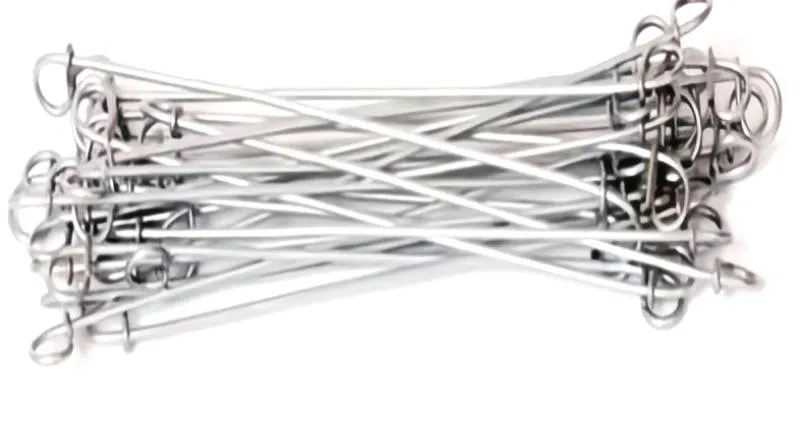-
 Phone:
Phone: -
 Email:
Email:

Galvanized Rebar Ties for Enhanced Durability in Construction Projects
The Importance of Galvanized Rebar Tie Wire in Construction
In the realm of construction, the materials used play a crucial role in determining the structural integrity and longevity of any project. Among these materials, rebar (reinforcing steel bars) is indispensable for providing strength and stability to concrete structures. However, to maximize the effectiveness of rebar, the use of high-quality tie wire is essential. Galvanized rebar tie wire, in particular, stands out due to its numerous advantages, making it a preferred choice for construction projects worldwide.
Understanding Galvanized Rebar Tie Wire
Galvanized rebar tie wire is a type of wire that has undergone a galvanization process, where it is coated with a layer of zinc to enhance its resistance to corrosion. This coating not only prolongs the wire's lifespan but also improves its durability under various environmental conditions. The wire typically comes in different gauges, allowing for versatility depending on the specific requirements of a construction project.
Benefits of Galvanized Rebar Tie Wire
1. Corrosion Resistance One of the primary advantages of galvanized rebar tie wire is its resistance to corrosion. In many construction environments, exposure to moisture, chemicals, and other environmental factors can lead to rust and degradation of materials. The zinc coating on galvanized wire provides a protective barrier that significantly reduces the risk of corrosion, ensuring the wire maintains its integrity over time.
2. Strength and Stability Galvanized tie wire is known for its remarkable tensile strength. This strength is crucial when securing rebar in place, as it ensures that the reinforcement remains stable during the concrete pouring process. A stable framework helps distribute loads evenly, thereby enhancing the overall strength of the concrete structure.
galvanized rebar tie wire

3. Ease of Use The flexibility of galvanized rebar tie wire makes it easy to work with. Construction workers can twist and tie the wire securely around rebar without the risk of it breaking or snapping. This ease of use contributes to faster project completion times and reduces labor costs, as workers can quickly fix the rebar in position.
4. Cost-Effectiveness Although galvanized rebar tie wire may have a slightly higher upfront cost compared to non-galvanized wire, its longevity and durability often make it more cost-effective in the long run. The reduced need for maintenance and replacements due to corrosion translates to significant savings for construction companies.
5. Environmental Impact In an age where sustainability is paramount, the use of galvanized materials is often appreciated for their reduced environmental footprint. Galvanization is a process that can be recycled, and galvanized products typically have longer lifespans, contributing less waste to landfills over time. By opting for galvanized tie wire, construction projects can support sustainable practices.
Applications in Construction
Galvanized rebar tie wire is commonly used across various construction projects, including residential buildings, commercial structures, bridges, and roadways. Whether securing rebar for foundations, beams, or columns, it plays a vital role in maintaining the structural integrity of the concrete. Its ability to withstand harsh weather conditions also makes it suitable for outdoor applications where exposure to moisture and other elements is a concern.
Conclusion
In conclusion, galvanized rebar tie wire is an essential component in the construction industry, offering significant benefits in terms of corrosion resistance, strength, ease of use, cost-effectiveness, and environmental sustainability. As construction practices evolve towards more durable and sustainable materials, the demand for galvanized tie wire is likely to increase. For any construction project involving rebar, investing in high-quality galvanized tie wire is not just a choice—it's a necessity for ensuring the safety and longevity of the structure. By prioritizing the use of galvanized materials, builders can contribute to creating robust and resilient infrastructure that stands the test of time.
-
Wire Mesh for Every Need: A Practical SolutionNewsJul.25,2025
-
Steel Fences: Durable, Secure, and Stylish OptionsNewsJul.25,2025
-
Roll Top Fencing: A Smart Solution for Safety and SecurityNewsJul.25,2025
-
Cattle Farm Fencing Solutions for Maximum SecurityNewsJul.25,2025
-
Affordable Iron Binding Wire SolutionsNewsJul.25,2025
-
Affordable Galvanized Wire SolutionsNewsJul.25,2025
-
Wire Hanger Recycling IdeasNewsJul.25,2025








